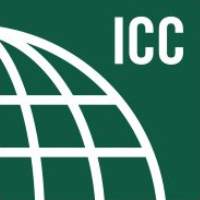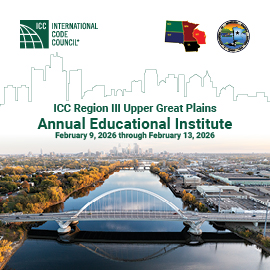
States Adopt 2009 I-Codes Creating Greener, Safer Communities
![]() Homes, schools, offices and other buildings will be safer and more energy-efficient as newly adopted construction codes take effect across the United States.
Homes, schools, offices and other buildings will be safer and more energy-efficient as newly adopted construction codes take effect across the United States.
The California Building Standards Commission voted this month to adopt the 2009 International Building, Existing Building, Fire and Residential codes statewide, effective Jan. 1, 2011. The International Residential Code (IRC) adoption is a first for the Golden State. It had been enforcing the 2006 International Building and Fire codes. In addition to these model codes, the state also adopted the first-in-the-nation mandatory Green Building Standards Code (CALGREEN).
“Our updated codes are going to change how homes and buildings are built and integrate green practices into our everyday building codes,” said Dave Walls, Executive Director of the California Building Standards Commission. “These comprehensive regulations will achieve major reductions in greenhouse gas emissions, energy consumption and water use, to create a greener and safer California.”
The California action adds to the growing list of 2009 I-Code adoptions at the state and local levels. Recent adoptions include Pennsylvania, New Jersey and New Hampshire.
The Pennsylvania Uniform Construction Codes were updated to the 2009 versions of the International Building, Existing Building, Residential, Fire, Energy Conservation, Plumbing, Mechanical, Fuel Gas, Performance and Wildland-Urban Interface codes. The new codes went into effect on December 31.
The New Jersey Department of Community Affairs approved the adoption of the 2009 International Building, Residential, Energy Conservation, Mechanical and Fuel Gas codes, to take effect in February with a six-month grace period.
The New Hampshire State Building Code Review Board updated the state’s building code to include the 2009 International Building, Residential, Energy Conservation, Plumbing and Mechanical codes, effective April 1.
The 2009 IRC, as adopted in California, Pennsylvania, New Jersey and New Hampshire, includes fire sprinkler requirements for new construction of one- and two-family homes and townhouses.
Other adoptions of at least one 2009 I-Code at the state level reported to the Code Council include Delaware, Iowa, Maryland and Oklahoma.
“We know that damage, fatalities and injuries from natural and man-made disasters can be reduced by code adoption and enforcement,” said ICC CEO Richard P. Weiland. “Keeping up to date with advances in technology, scientific advancements and lessons learned from past experience by adopting the latest codes demonstrates a commitment to public safety.”
While the IRC has received much attention for its fire sprinkler requirement, it also addresses energy efficiency, use of carbon monoxide alarms, and design and construction of homes in high-wind regions.
Other codes being adopted by states include the 2009 International Energy Conservation Code (IECC), which will produce approximately 15% in energy efficiency gains compared to the 2006 edition, according to U.S. Department of Energy.
The 2009 International Building Code (IBC) has new safety features that include: an additional stairway for high rises, emergency evacuation elevators, and new guidelines for the design and construction of storm shelters.
New requirements in the 2009 International Fire Code (IFC) ensure seamless coverage of emergency radios inside and outside buildings; special markings for emergency exits and stairwells; and luminous exit pathway markings in new high-rise buildings.
The International Code Council, a membership association dedicated to building safety, fire prevention and energy efficiency, develops the codes used to construct residential and commercial buildings, including homes and schools. Most U.S. cities, counties and states choose the International Codes, building safety codes developed by the International Code Council. The International Codes also serve as the basis for construction of federal properties around the world, and as a reference for many nations outside the United States.







